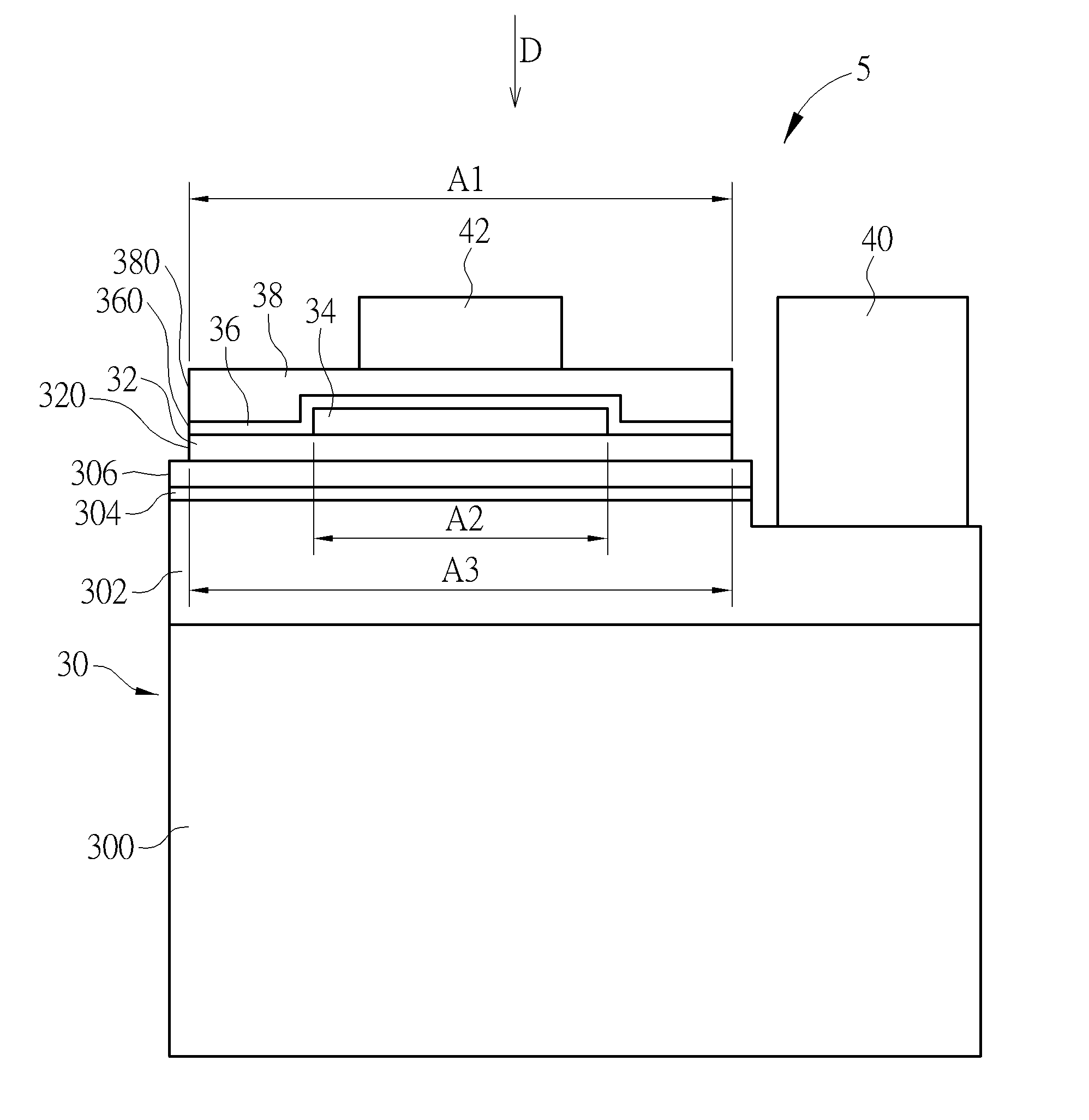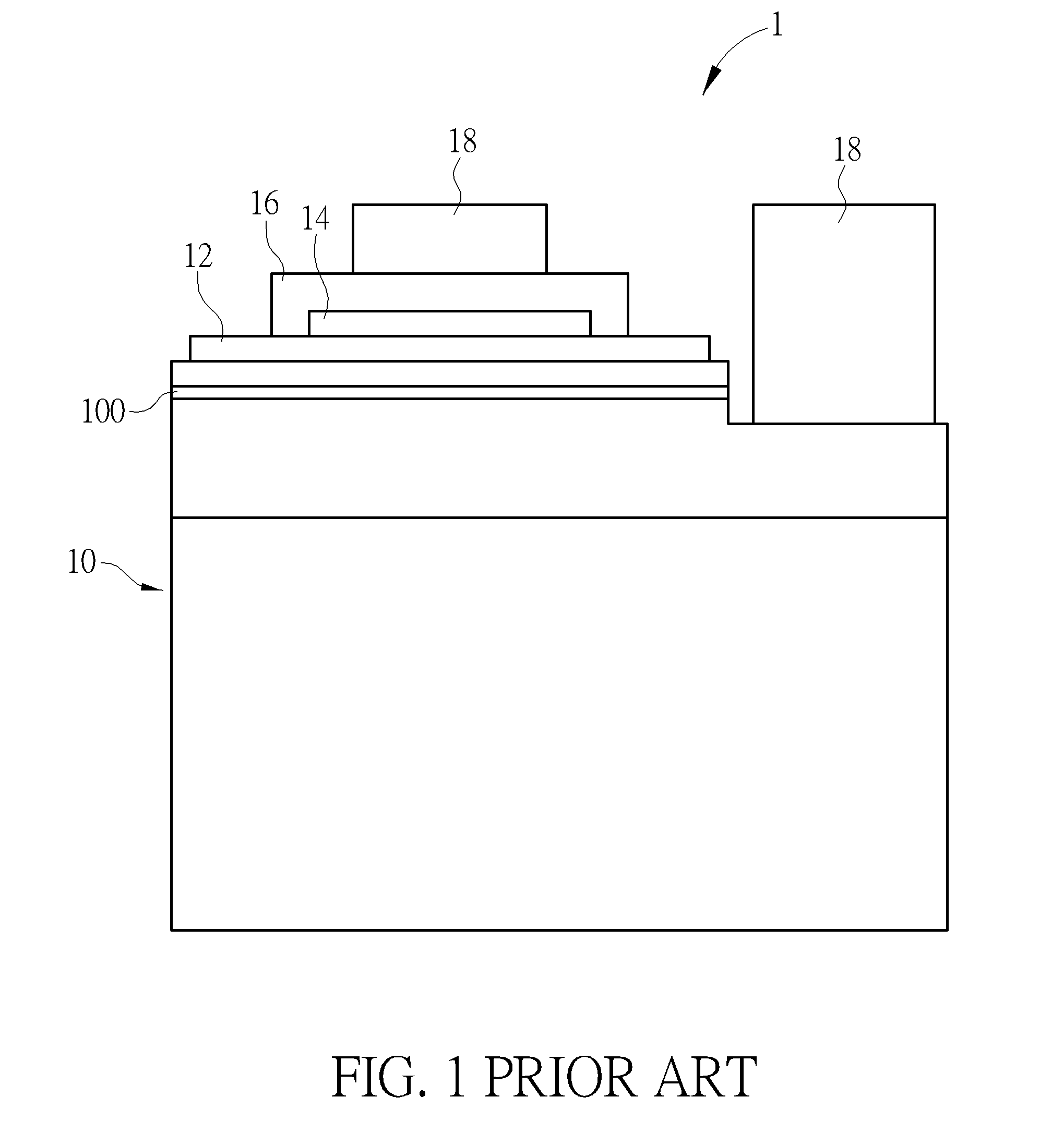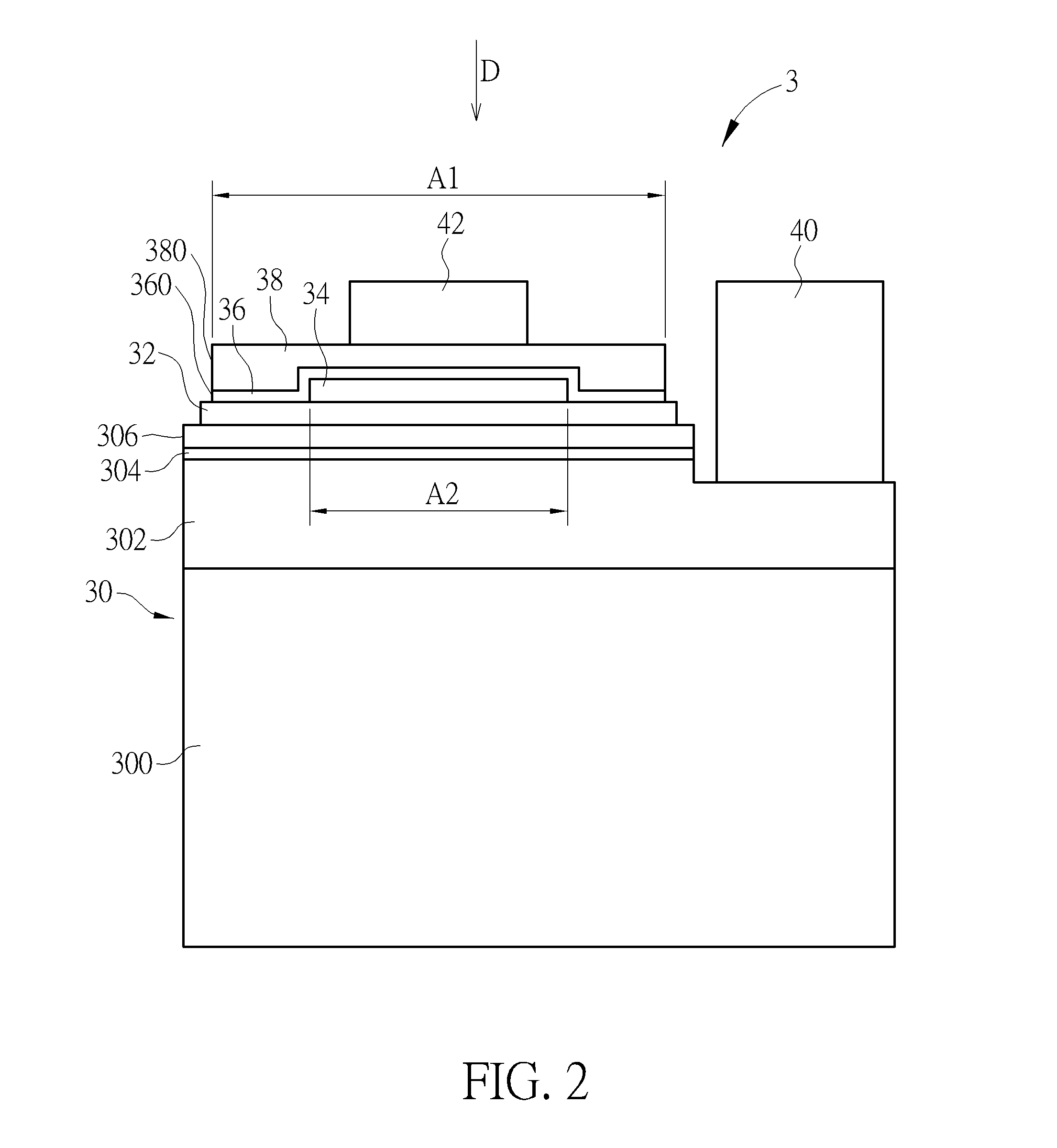Light emitting component
a technology of light emitting components and components, applied in the direction of basic electric elements, electrical equipment, semiconductor devices, etc., can solve the problems of ineffective enhancement of the entire light emitting efficiency of the light emitting component b>1/b>, unstable silver and random diffusion under high temperature, etc., to achieve enhanced light emitting efficiency of the light emitting component, less active chemical properties, and effective increase of the total reflective area
- Summary
- Abstract
- Description
- Claims
- Application Information
AI Technical Summary
Benefits of technology
Problems solved by technology
Method used
Image
Examples
first embodiment
[0017]Referring to FIG. 2, FIG. 2 is a schematic view illustrating a light emitting component 3 according to the disclosure. As shown in FIG. 2, the light emitting component 3 comprises an epitaxial structure 30, an adhesive layer 32, a first reflective layer 34, a second reflective layer 36, a block layer 38, a first electrode 40 and a second electrode 42. The epitaxial structure 30 comprises a substrate 300, a first semiconductor layer 302, a light emitting layer 304 and a second semiconductor layer 306, wherein the first semiconductor layer 302 is located on the substrate 300, the light emitting layer 304 is located on the first semiconductor layer 302, and the second semiconductor layer 306 is located on the light emitting layer 304. A material of the substrate 300 may be, but not limited to, a sapphire. The first electrode 40 is electrically connected to the first semiconductor layer 302 and the second electrode 42 is electrically connected to the second semiconductor layer 306...
second embodiment
[0021]Referring to FIG. 3 along with FIG. 2, FIG. 3 is a schematic view illustrating a light emitting component 5 according to the disclosure. The main difference between the light emitting component 5 and the aforementioned light emitting component 3 is that, in the light emitting component 5, the side surface 360 of the second reflective layer 36, the side surface 380 of the block layer 38 and a side surface 320 of the adhesive layer 32 are planar. In other words, the projection area A1 of the second reflective layer 36 in the projection direction D may be equal to a projection area A3 of the adhesive layer 32 in the projection direction D, and the ratio of the projection area A2 of the first reflective layer 34 in the projection direction D to the projection area A4 of the light emitting layer 304 in the projection direction D is smaller than 30%. In an embodiment, the ratio of the projection area A2 of the first reflective layer 34 in the projection direction D to the projection...
third embodiment
[0022]Referring to FIG. 4 along with FIG. 3, FIG. 4 is a schematic view illustrating a light emitting component 7 according to the disclosure. The main difference between the light emitting component 7 and the aforementioned light emitting component 5 is that the second reflective layer 36 of the light emitting component 7 is further extended onto the second semiconductor layer 306 of the epitaxial structure 30, such that the projection area A1 of the second reflective layer 36 in the projection direction D is larger than the projection area A3 of the adhesive layer 32 in the projection direction D, and the ratio of the projection area A2 of the first reflective layer 34 in the projection direction D to the projection area A4 of the light emitting layer 304 in the projection direction D is smaller than 30%. In one embodiment, the ratio of the projection area A2 of the first reflective layer 34 in the projection direction D to the projection area A4 of the light emitting layer 304 in...
PUM
 Login to View More
Login to View More Abstract
Description
Claims
Application Information
 Login to View More
Login to View More - R&D
- Intellectual Property
- Life Sciences
- Materials
- Tech Scout
- Unparalleled Data Quality
- Higher Quality Content
- 60% Fewer Hallucinations
Browse by: Latest US Patents, China's latest patents, Technical Efficacy Thesaurus, Application Domain, Technology Topic, Popular Technical Reports.
© 2025 PatSnap. All rights reserved.Legal|Privacy policy|Modern Slavery Act Transparency Statement|Sitemap|About US| Contact US: help@patsnap.com



